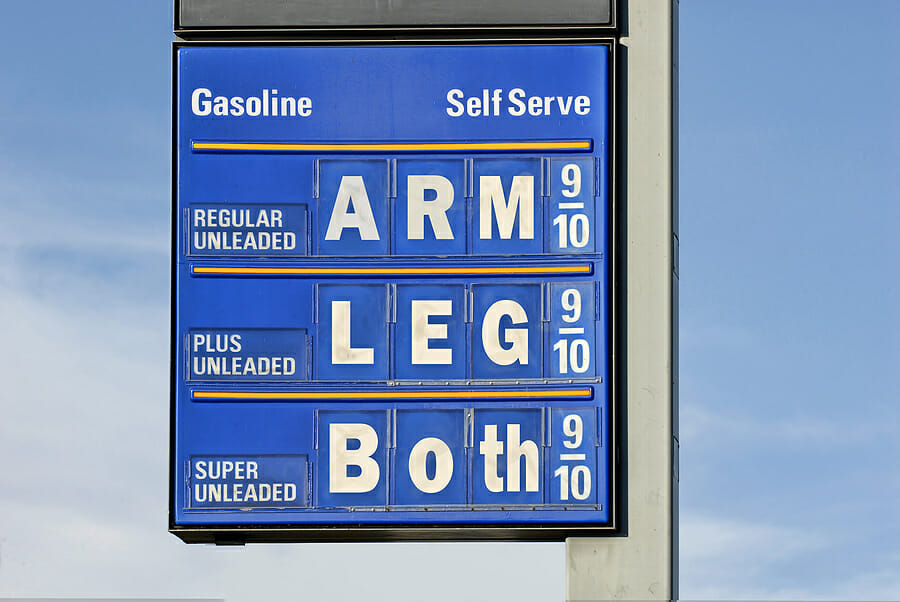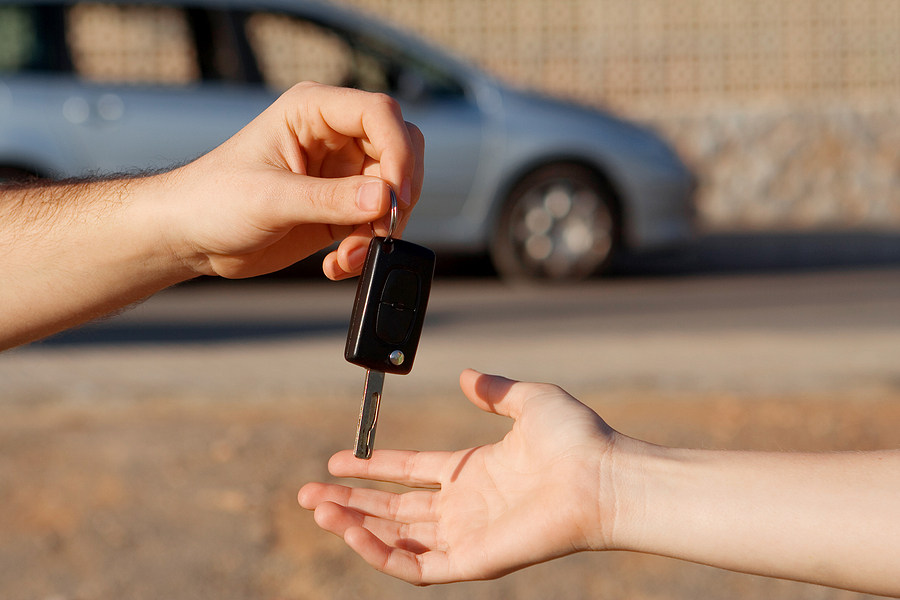Gas prices are rising drastically, which affects the auto industry in multiple ways. From the costs of production to the costs of consumer operation and every step from manufacturing to use, gas costs can significantly affect the auto industry.
The rising prices are also drastically affecting the automotive sales industry and the entertainment industry when it comes to cars. Car shows with gas guzzlers as their centerpiece are being met with less enthusiasm, and people are more interested in fuel-efficient options.
In addition, gas prices have a direct correlation to the number of traffic fatalities. When gas prices are high, people drive less, and fewer accidents bring down insurance rates and repair costs.
No single answer is how the gas price rise will affect the auto industry. It is a dynamic situation that will change and adapt as gas prices continue to fluctuate. The community has to find ways to adapt to the multiple facets of this ever-changing situation.
Production
Table of Contents
Car makers are feeling the pinch as gas prices continue to rise. Gas is one of the most significant expenses for car makers, and as prices go up, so does the cost of production for vehicles.
This increase in cost is often passed on to consumers in the form of higher prices for new vehicles. In addition, higher gas prices can decrease demand for new cars, as people are more likely to purchase fuel-efficient used cars instead.
As a result, car makers are facing a challenging market regarding gas prices. However, they are also working hard to develop more fuel-efficient vehicles that will help to offset the impact of higher gas prices.
Operation
In addition to the extra cost of filling up their tanks, higher gas prices also make operating and maintaining their vehicles more expensive. As a result, some people are choosing to purchase fewer new cars.
While this may help to save money in the short term, it can also lead to long-term problems. For example, if people only buy new cars when they need to, they may miss out on important safety features or end up with a vehicle that doesn’t meet their needs.
Additionally, by waiting longer to purchase a new car, people may pay more in the long run due to inflation. Ultimately, Gas prices may be a pain for consumers, but it’s essential to weigh all of your options before making any significant decisions.
Maintenance
With rising fuel prices, some owners wait longer between routine maintenance appointments and typical mechanical work. While this is better for pocketbooks, it’s causing strain on the workings of your cars and on the business success of mom-and-pop style repair shops. It’s best to keep up on routine maintenance so your vehicle can be trusted when needed.
Supply and Demand
Finally, gas prices directly impact the demand for certain types of vehicles. For example, when gas prices are high, consumers are more likely to purchase smaller, more fuel-efficient cars instead of larger gas-guzzling SUVs.
The reason is simple: high gas prices make filling the tank more expensive, so consumers are looking for ways to save money at the pump. In addition, high gas prices can also decrease overall driving, as people are less likely to take unnecessary trips when fuel is expensive.
This can ripple effect on the economy, as fewer people going out and spending money can slow down growth. Ultimately, gas prices are critical in determining which vehicles consumers purchase.
The Automotive Industry Feels the Pressure
These factors put pressure on the auto industry when gas prices rise. However, there are a few ways that shipping cars can help to offset some of these rising costs.
Changing Purchase Priorities
Recently, people have purchased used cars instead of new ones to save money, which can often be just as reliable. This puts pressure on new car sales, and used cars must be shipped to the dealerships where they are needed.
Fuel efficiency is often a top priority for consumers when gas prices are high. Smaller cars, hybrids, and electric vehicles have become more popular. While this can be a challenge for auto manufacturers, it also creates an opportunity for shipping companies specializing in smaller vehicles.
Affect on the Economy
As gas prices rise, people tend to drive less, which can ripple effect on the economy. Fewer people going out and spending money can slow down growth. This decrease in demand can present challenges for the auto industry.
When gas prices rise, more people take public transport, reducing the need for expensive cars and trucks. Further, they plan their trips with fewer stops and more energy-efficient routes when they drive. This means fewer stops and fewer purchases along the way.
However, it also creates an opportunity for shipping companies to help deliver cars to people who need them. In addition, shipping companies can also help to deliver parts and supplies to auto manufacturers to continue producing cars.
While gas prices may be a pain for consumers, they can also present opportunities for shipping companies. By understanding how gas prices affect the auto industry, shipping companies can adjust their operations to meet the needs of their customers.
Economy of Scale
As gas prices continue to rise, the auto industry, including sales companies, is feeling the squeeze. Shipping cars by truck is becoming increasingly expensive, and that cost is being passed on to consumers.
However, there are some things that the auto industry can do to offset these rising costs. For one, shipping cars by rail is often more fuel-efficient than shipping them by truck, which can help reduce the overall transportation cost. Additionally, car makers can take advantage of economies of scale by shipping large numbers of cars at once, which can help reduce the shipping cost.
Room for Opportunity
The auto industry is always looking for ways to save on gas and improve fuel economy. One way this is done is through advancements in automotive technology. For example, cars now have more aerodynamic designs, which help them to cut through the air and reduce drag. This makes them more fuel-efficient and helps to save gas.
For example, carmakers are working on new designs to allow cars to travel further on a gas tank. Additionally, they are developing new technologies that will allow cars to brake and start more efficiently, which can help improve gas mileage.
Another way that automakers are working to improve fuel economy is by using lighter materials in their vehicles. For example, some carmakers are using aluminum instead of steel in their vehicles. This helps reduce the car’s weight, making it easier to move and requiring less gas.
As gas prices continue to rise, there is an opportunity for shipping companies to help the auto industry by transporting these lighter materials. Additionally, shipping companies can also transport cars designed for better fuel economy. Doing so can help the auto industry save gas and money.
Another example, carmakers are working on new designs to allow cars to travel further on a gas tank. Additionally, they are developing new technologies that will allow cars to brake and start more efficiently, which can help improve gas mileage.
AutoStop
How does the Auto Stop during idle feature save gas?
Auto Stop saves gas by turning off the engine when the vehicle is stopped, as it is in traffic jams, at stop lights, or at drive-thru windows. This prevents the engine from using gas unnecessarily, saving drivers a lot of money over time. In addition, these features help to improve fuel economy, which can save drivers money.
Standard benefits:
– Saves gas
– Improves fuel economy
– Helps the environment
Emotional benefits:
– Reduces stress while driving in traffic
– Can help save money
Intelligent Cruise Control
How does the Intelligent Cruise Control feature save gas?
The Intelligent Cruise Control feature helps save gas by automatically adjusting the vehicle’s speed based on traffic flow. This prevents the car from wasting gas by driving too slowly or too fast for the conditions. In addition, this feature can help to improve fuel economy, which can save drivers money.
Standard benefits:
– Keeps you safe from the car in front of you.
– Prevents you from speeding up and slowing down unnecessarily.
Emotional benefits:
– Helps maintain a comfortable driving experience.
– Can help reduce stress levels.
Hybrid or Plug-In Technology
How does the Hybrid or Plug-In Technology save gas?
The Hybrid or Plug-In Technology helps save gas by using an electric motor and a gas engine to power the car. This allows the car to run less gas, saving drivers money. In addition, this technology can help to improve fuel economy, which can save drivers money.
Trucks and large rigs are some of the biggest gas guzzlers on the road. Many trucking companies are turning to hybrid technology to reduce fuel consumption and fossil fuel use. Hybrid trucks use a gas engine and an electric motor to power the truck. This helps reduce fuel consumption and emissions while saving the company money.
In addition to hybrid technology, many trucking companies, and public transport companies also use natural gas to power their trucks. Natural gas is a clean-burning fuel that is cheaper than gasoline or diesel. This helps to reduce fuel costs and emissions while also helping the company save money.
There are many ways that the auto industry is working to save gas and improve fuel economy. These include advancements in automotive technology, using lighter materials, and employing hybrid or plug-in technology. Shipping companies can help the auto industry by transporting these materials and technologies. Doing so can help to save gas and money and reduce emissions.
Key Takeaways on Economy and the Auto Industry
Ultimately, gas prices are a significant concern for the auto industry. However, by taking advantage of economies of scale and shipping cars by rail, the auto industry can offset some of the rising costs associated with gas prices. In doing so, they can protect their bottom line and maintain a healthy business even when gas prices are rising.
No matter what you drive, you must be mindful of gas prices and how they may affect your budget. By being aware of the potential costs, you can make informed decisions about your vehicle and save money in the long run.
Tips for Saving Money on Fuel Costs
There are several ways that you can save money on fuel costs, regardless of the type of car you drive. Here are a few tips to help you get started:
Carpool or take public transportation when possible.
Taking public transportation or carpooling when possible is a great way to reduce your carbon footprint. Not only does it save gas, but it also reduces emissions from each vehicle. In addition, carpooling or taking public transportation can help to ease traffic congestion. This is especially important in cities where there are large numbers of commuters.
Drive the speed limit to help improve gas mileage.
One way to help improve your gas mileage is to drive the speed limit. When you drive faster, your engine has to work harder and use more fuel. Driving the speed limit can help your engine run more efficiently and use less fuel. In addition, driving slower can help you avoid accidents.
Speeding is one of the leading causes of accidents, and even a minor fender bender can cause significant damage to your car (not to mention your wallet). So by driving the speed limit, you can help protect your car and save money on gas.
Avoid unnecessary idling to help save gas.
Many of us have been guilty of letting our car idle while we run into the store or sit in the driveway while we wait for a friend. But did you know that idling can waste a significant amount of gas?
The EPA estimates that idling your car for just one minute can use up to one-fifth of a gallon of gas. Idling also releases emissions into the air, contributing to pollution and harming the environment.
So next time you’re tempted to let your car idle, remember that it’s terrible for your wallet and the planet. Turning off your engine when you’re not driving can help save gas and reduce emissions.
Plan your route ahead of time to help avoid getting lost and wasting gas.
It can be frustrating to get lost while driving, especially if you’re in a hurry. Not only does it waste time, but it can also waste gas. Beyond getting lost, planning your stops in a circular route ensures you’re not backtracking for your stops. Fortunately, you can do a few things to help avoid getting lost.
One of the most important is to plan your route ahead of time. If you know where you’re going, it’s much less likely that you’ll make a wrong turn and end up getting lost. You can also program your destination into your GPS before you start driving. That way, you’ll have turn-by-turn directions and won’t worry about taking a wrong turn.
Finally, make sure to keep an eye on your gas gauge. If you’re running low on gas, it’s best to stop and refuel before you run out entirely. That way, you won’t have to worry about getting stranded in an unfamiliar area.
Keep your car well-maintained to help improve fuel economy.
Fuel economy is an essential consideration for any driver, and there are several things you can do to help improve your car’s gas mileage. One of the most important is to keep your car well-maintained. It’s so important that we’ve mentioned it in detail twice.
Regular oil changes and tune-ups can help to keep your engine running smoothly, and properly inflated tires can reduce drag and improve mileage. In addition, keeping your car clean can also help to improve fuel economy. A build-up of dirt and debris on the car’s exterior can create the drag, making it harder for the engine to work efficiently.
Shop around for the best gas prices in your area.
If you’re like most people, you probably don’t give much thought to the price of gasoline. After all, it’s a necessary expense, and there’s not much you can do about it, right? Wrong! There can be a big difference in gas prices from one station to the next, so it pays to shop around. Here are a few tips to help you find the best gas prices in your area:
- Check local media listings or use a phone app that tracks fuel prices, such as GasBuddy or Gas Guru.
- Ask your friends and neighbors where they get their gas. Word of mouth is always an excellent way to find out about great deals.
- Compare prices at different times of the day and different days of the week.
- Utilize fuel points and rewards programs, such as those offered through Kroger or Fred Meyers and specific fuel companies.
By following these simple tips, you can ensure you’re getting the best possible gasoline price- which can make a big difference in your budget!
Use gas-saving features in your cars, such as Auto Stop or Intelligent Cruise Control.
Today’s car owners have a lot of options when it comes to saving gas. Many newer vehicles have gas-saving features like Auto Stop and Intelligent Cruise Control.
These features can help you save money at the pump and are easy to use. So next time you’re behind the wheel, take advantage of them. Your wallet will thank you.
Consider investing in hybrid or plug-in technology for your car.
There are several advantages to investing in hybrid or plug-in technology for your car. Hybrid and plug-in cars have significantly lower emissions than gasoline-powered cars, making them better for the environment.
Hybrid and electric cars often get better mileage than their gasoline-powered counterparts, meaning you’ll save on fuel costs over time. These cars typically have several high-tech features, such as lane departure warning systems and adaptive cruise control. If you’re looking for a new car, consider investing in hybrid or plug-in technology – you may be surprised at how much you like it!
Adapt and Overcome the Struggles of Rising Fuel Prices
By following these tips, you can save money on gas and keep more money in your pocket. With gas prices constantly fluctuating, it’s essential to be mindful of your fuel costs and take steps to reduce them when possible. By being proactive, you can save yourself money and stress over time.
Regardless of where fuel prices send the automotive industry, we will adapt to the changes and grow into new habits that save our wallets and bring us joy in our cars. We will continue to explore new technologies and find efficient ways to power our vehicles.
The next time you feel stressed about gas prices, remember that the industry is working hard to offset the rising costs. And in the meantime, there are plenty of ways to save money on gas.
Image Source: BigStockPhoto.com (Licensed)
Site Disclaimer
The Content in this post and on this site is for informational and entertainment purposes only. You should not construe any such information or other material as legal, tax, investment, financial, or other advice. Nothing contained on our Site constitutes a solicitation, recommendation, endorsement, or offer by HII or any third party service provider to buy or sell any securities or other financial instruments.
Nothing in this post or on this site constitutes professional and/or financial advice. You alone assume the sole responsibility of evaluating the merits and risks associated with the use of any information or other content in this post or on this site.
You recognize that when making investments, an investor may get back less than the amount invested. Information on past performance, where given, is not necessarily a guide to future performance.
Related Categories: Cars & Vehicles, Reviews








